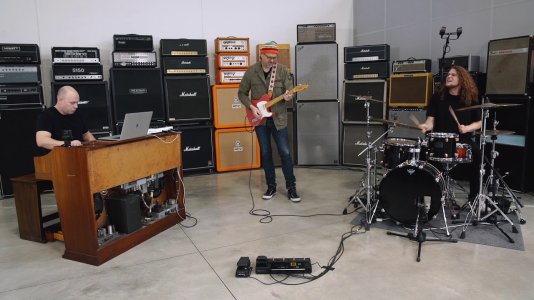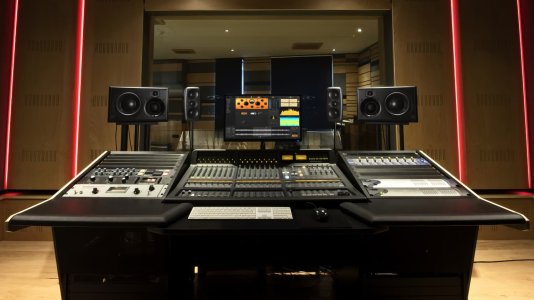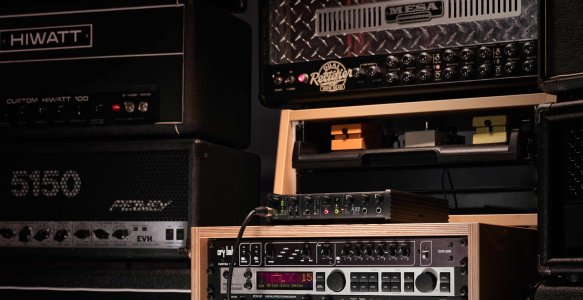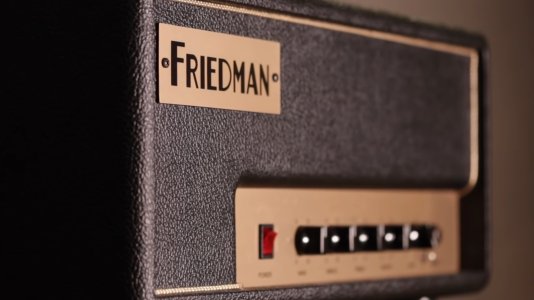MirrorProfiles
Rock Star
- Messages
- 4,361
BRIT 9000 / JCM 900 MKIII?
I know there are several threads about grumbling about IK and AT5 about various (and valid) topics, but there's a few things I still really like Amplitube for that I believe warrant some positive discussion (and maybe get overlooked because of the negative stuff).
I was thinking recently about the Brit 9000 model that was introduced in version 4.

I've only ever owned a JCM900 4100 and never paid too much attention to the other models in the JCM 900 line, nor this particular emulation. The manual strongly suggests this model is the more-common 4100 Dual Reverb Model. If you look more closely at the controls available though, it seems to be based on (probably) the "High Gain Master Volume MKIII" version of the JCM900 (notice "preamp volume AND sensitivity" and just a single channel).

The Dual Reverb model has a single gain control for each channel:

The SL-X also shares the same controls as the Mark III, but the difference between them is that on the SL-X, setting the "sensitivity" knob to 0 means you'll have no voltage going across that gain stage and therefore no sound. On the Mark III, it just means you won't be clipping, so you'll still get sound coming through with that control on 0.
To get a similar amount of preamp gain as this video:
I have to max out the input level slider (after providing a 11.5dBu input), and its still a little undergained compared to the video. That said, it sounds a HELL OF A LOT better like this, and both preamp controls have a way more effective and useful range. Well worth a try.
There is also a "British Tube Lead 2" model which is older - I can't tell if its a looser emulation of this same reference amp, or whether this one is the JCM 900 4100. The manual suggests they are both the 4100, but the Brit 9000 almost certainly seems to be the MKIII to me.
Being the wanker that I am, I went digging through some of IK's photos of their amp collection (and previous and current studios). I really wish there was some cool gear porn shots, because IK really have an ASTOUNDING amount of cool amps and especially cabs. I couldn't find anything with this JCM 900 in unfortunately.
If we haven't totally frightened @IK Multimedia off from posting here besides new product announcements, it would be awesome if you're able to share anything from IK's stash.
I'll add more posts of other cool stuff I like in AT5 later
I know there are several threads about grumbling about IK and AT5 about various (and valid) topics, but there's a few things I still really like Amplitube for that I believe warrant some positive discussion (and maybe get overlooked because of the negative stuff).
I was thinking recently about the Brit 9000 model that was introduced in version 4.
I've only ever owned a JCM900 4100 and never paid too much attention to the other models in the JCM 900 line, nor this particular emulation. The manual strongly suggests this model is the more-common 4100 Dual Reverb Model. If you look more closely at the controls available though, it seems to be based on (probably) the "High Gain Master Volume MKIII" version of the JCM900 (notice "preamp volume AND sensitivity" and just a single channel).
The Dual Reverb model has a single gain control for each channel:
The SL-X also shares the same controls as the Mark III, but the difference between them is that on the SL-X, setting the "sensitivity" knob to 0 means you'll have no voltage going across that gain stage and therefore no sound. On the Mark III, it just means you won't be clipping, so you'll still get sound coming through with that control on 0.
To get a similar amount of preamp gain as this video:
I have to max out the input level slider (after providing a 11.5dBu input), and its still a little undergained compared to the video. That said, it sounds a HELL OF A LOT better like this, and both preamp controls have a way more effective and useful range. Well worth a try.
There is also a "British Tube Lead 2" model which is older - I can't tell if its a looser emulation of this same reference amp, or whether this one is the JCM 900 4100. The manual suggests they are both the 4100, but the Brit 9000 almost certainly seems to be the MKIII to me.
Being the wanker that I am, I went digging through some of IK's photos of their amp collection (and previous and current studios). I really wish there was some cool gear porn shots, because IK really have an ASTOUNDING amount of cool amps and especially cabs. I couldn't find anything with this JCM 900 in unfortunately.
If we haven't totally frightened @IK Multimedia off from posting here besides new product announcements, it would be awesome if you're able to share anything from IK's stash.
I'll add more posts of other cool stuff I like in AT5 later
Last edited:





